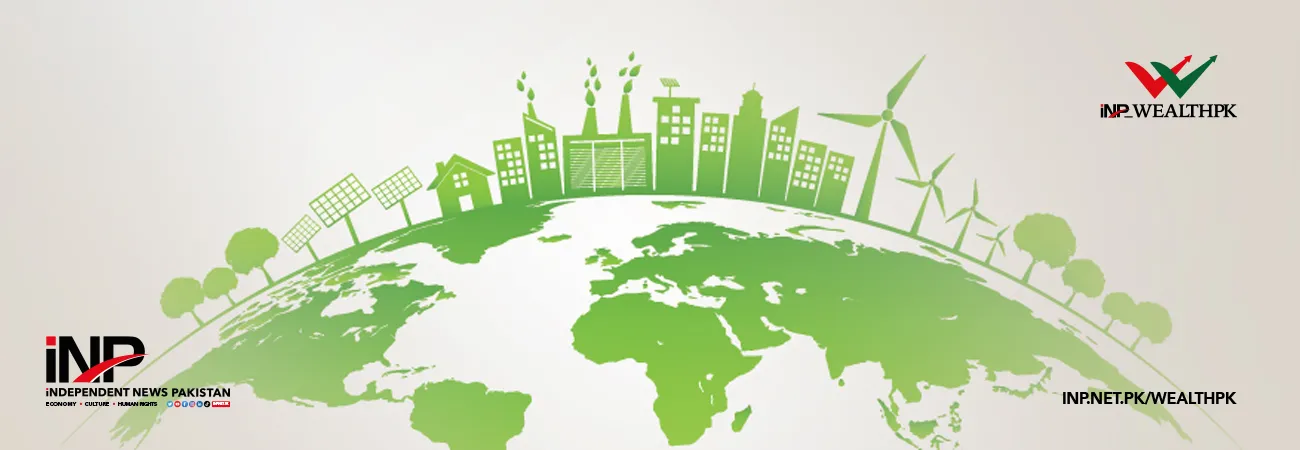INP-WealthPk
By Ayesha Saba
ISLAMABAD, OCT 29 (INP-WealthPK)- Pakistan has an abundance of raw materials required by its leather industry that is one of major export-oriented industries either in the form of finished leather or leather products and the second most dynamic sector after textiles.
Pakistan’s leather industry produces a broad range of goods and consists of sub-sectors namely leather garments, footwear, leather gloves, shoes, tanning etc.
Pakistan’s leather export has struggled to compete with its South Asian neighbours in the last few years. According to the Pakistan Tanners Association (PTA), Pakistan is the only country that experienced negative growth in exports as opposed to the optimistic growth by its neighbouring countries namely India, China and Bangladesh.
The contribution of Pakistani leather goods [hand bags, purses, suitcases, key chains, belts, and footwear etc.] is small in the international market, mainly because this sector is less developed. In the previous five years, exports of leather and leather products declined gradually and slipped to below $850 million in FY19. The Pakistan Bureau of Statistics shows a declining trend in export earnings of leather and of leather products.
From July 2020 to March 2021, the country exported $427.73 million of goods compared to $401.03 million in 2019-2020 fiscal year, increasing by 6.66% year-on-year.
China is the largest exporter in the global leather sector (40% of global exports) ahead of Italy (14.8%), Vietnam (5.7%), France (11.5%), and India (2.5%).
 Global leather exporters. Source: Statista
Pakistan’s leather and leather products is a job-oriented sector, providing employment to a very large segment of the society and earning foreign exchange. This vital sector has ample scope for growth but it confronts some challenges which are hampering the desired level of growth.
On top of these challenges is lack of modern technology for quality products and unavailability of skilled manpower. There is a growing need to prepare our labour force for improvement and skill development by arranging courses and training, making our leather products saleable in the increasingly competitive international market.
Lack of investment is another serious problem due to which most of tanneries produce low to average quality leather. As a result, the country cannot manufacture and export bulks of highly value-added leather products. This keeps the average per-unit price of both tanned leather and leather products low.
Compared with China and India, high cost of production, particularly wage differentials, higher energy and input prices with no subsidy provided by the government, add to the hurdles.
Severe impact of COVID-19 has made the situation worse, causing cancellation of export orders, while ongoing shipments are being halted by the foreign customers and due payment against the shipments are being stopped.
The Government of Pakistan should follow export-led policies like China and revise its trade policy for the leather sector. It should also pay attention to reducing duties on import of tannery-related machinery, as locally manufactured machinery is of inferior quality, which not only increases the cost of production but also makes products less competitive in the international market.
Global leather exporters. Source: Statista
Pakistan’s leather and leather products is a job-oriented sector, providing employment to a very large segment of the society and earning foreign exchange. This vital sector has ample scope for growth but it confronts some challenges which are hampering the desired level of growth.
On top of these challenges is lack of modern technology for quality products and unavailability of skilled manpower. There is a growing need to prepare our labour force for improvement and skill development by arranging courses and training, making our leather products saleable in the increasingly competitive international market.
Lack of investment is another serious problem due to which most of tanneries produce low to average quality leather. As a result, the country cannot manufacture and export bulks of highly value-added leather products. This keeps the average per-unit price of both tanned leather and leather products low.
Compared with China and India, high cost of production, particularly wage differentials, higher energy and input prices with no subsidy provided by the government, add to the hurdles.
Severe impact of COVID-19 has made the situation worse, causing cancellation of export orders, while ongoing shipments are being halted by the foreign customers and due payment against the shipments are being stopped.
The Government of Pakistan should follow export-led policies like China and revise its trade policy for the leather sector. It should also pay attention to reducing duties on import of tannery-related machinery, as locally manufactured machinery is of inferior quality, which not only increases the cost of production but also makes products less competitive in the international market.













